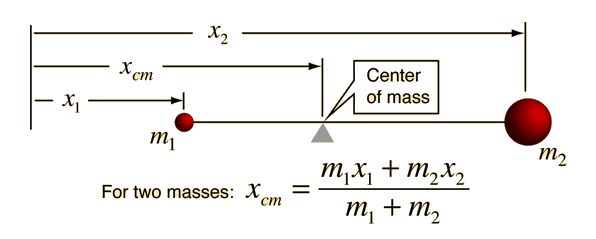GrooveGlider 9.4" & 12" variable effective mass pivot tonearms
Highlights
Where your cartridge gives the best.

Grooveglider tonearm simplified exploded view
The GrooveGlider family of tonearms represent the results of two years of work developing no-compromise no-nonsense tonearms that are the ideal answer in supporting modern, high-quality high-tracking cartridges.
We managed to achieve all goals of our endeavour and namely the highest trackability, zero-level internal resonances, the ability to modify the effective mass, no sound signature, ease of installation and ease of operation.
Highest trackability

After several prototypes, we concluded that the unipivot design is the one that offers the best trackability of any gimbal or bearing-based design.
The uni-pivot design offers the lowest frictions and spurious resonances than any other design during the tonearm movement due to the minimal area of contact between the moving parts; moreover, a well-balanced pivot doesn't suffer the additional, often asymmetric, strain that the bearings suffer due to less than ideal weight distribution.
The uni-pivot design sometimes suffered from bad reviews because of user-related feedback while operating the tonearm. Users can complain that uni-pivot tonearms feel "flimsy" and "badly wobble" while moving the cartridge into the playing position; this problem doesn't affect the GrooveGlider.
The design of the pivot assembly, together with the mass of the whole housing and its weight distribution, minimises the roll around the longitudinal axis. This design makes the tonearm's operation more rewarding than in other uni-pivot constructions, with user feedback very close to the much-constrained gimbal tonearms.
Zero resonances


Visual representation of internal and external resonance
You cannot avoid resonances; anything that moves or is exposed to external forces, like sound waves, resonates.
A careful choice of materials and their interaction can dampen internal and external resonances.
In developing the GrooveGlider, we didn't save money on the materials, most parts of the tonearm are made from machined brass, and then 24 carats are gold-plated to limit the formation of the patina. The pivot assembly and the central pillar are made from surgical-grade 316L stainless steel; the arm tube is made from high-graphite carbon fibre, headshell, and other parts from CNC machined aeronautic-grade aluminium.
Later in this document, we will discuss how the choice of materials and the whole construction effectively dampens internal and external resonances.
Variable effective mass.

Simplified effective mass example - frictions are not taken into consideration
The effective mass of the GrooveGlider can be modified, within limits, of course.
The GrooveGlider 9.4 is designed for high to low-compliance cartridges, while the GrooveGlider 12 is best suited for mid-to-low-compliance cartridges.
Effective mass is often the victim of misconception.
Most people, not only the general public but also self-proclaimed experts, believe that the vertical and lateral resonance, directly resulting from the cartridge's compliance and the effective mass of the tonearm, can be easily calculated by applying a simple formula where the variables are the cartridge's weight, the tonearm's producer gives the cartridge's compliance and the effective mass that merely reflect the headshell weight (or thereabout).
The above approach is entirely wrong; the effective mass is an inertia value and in this value comes to play a lot of factors: the mass of each component (cartridge, headshell, arm tune, counterweight, off-axis lateral weights) and their distance from the pivot (therefore, the effective mass changes depending on the VTF, Vertical Tracking Force, applied to the cartridge's stylus since the counterweights change position in relation to the pivot); to this, you must add any friction or damping materials that affect the movements and that generate inertia.
The GrooveGlider can modify the effective mass using the additional weights supplied with the tonearm (to a small extent) and/or adding silicon damping oil in the specially designed compartment inside the pivot assembly that generates inertia (to a much greater extent). A test record is required to adjust the vertical and lateral resonance precisely.
NO sound signature.
I'm always baffled by reviews of tonearms and electronics that enthusiastically praise the "sound" of this or that piece of gear.
While I can understand the concept of having a sound signature in a transducer like a cartridge or a speaker, I don't see how it can be desirable in any other device.
The GrooveGlider is designed to hold your cartridge and allow it to express itself at the fullest, exploiting all its tracking ability without any induced resonance or other unwanted effects, and this is achieved with a perfect damping of resonances, a state-of-the-art trackability and the ability to set your cartridge in perfect accordance with its compliance.
Ease of installation
Ease of installation doesn't mean plug-and-play; no tonearm is plug-and-play, and a lousy setup tonearm, even the most straightforward, will result in poor sound regardless of the price tag of all the other components.
The GrooveGlider is supplied with the most comprehensive step-by-step installation guide (with videos) on the market. Almost all accessories necessary for a successful setup are included (cart alignment arc protract, VTF scale, azimuth scale); you need to add a test record if you want to have the resonance frequencies. The bias set is perfectly suitable (forget about the silly formulas you can find online).
Ease of operation.

Lift the gold-plated finger lift, gently drop the needle on the record, sit down and enjoy.
